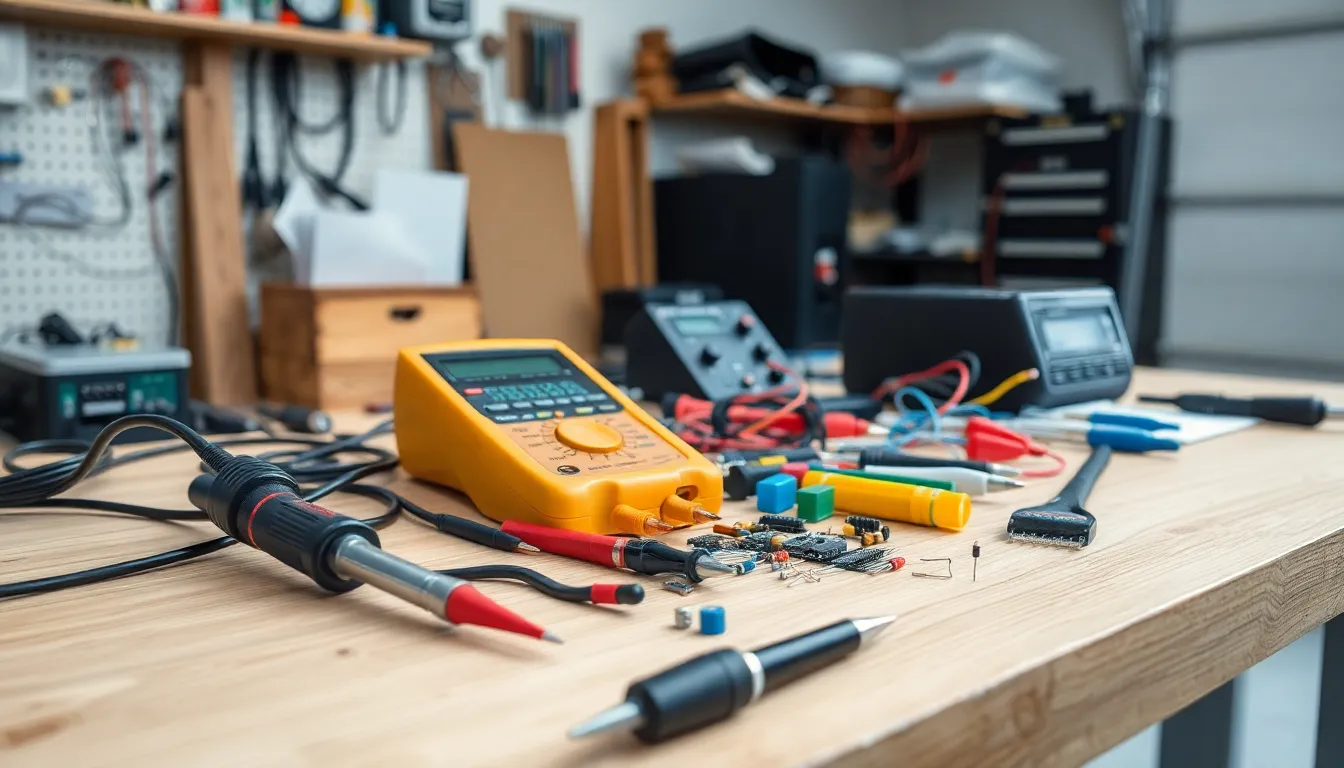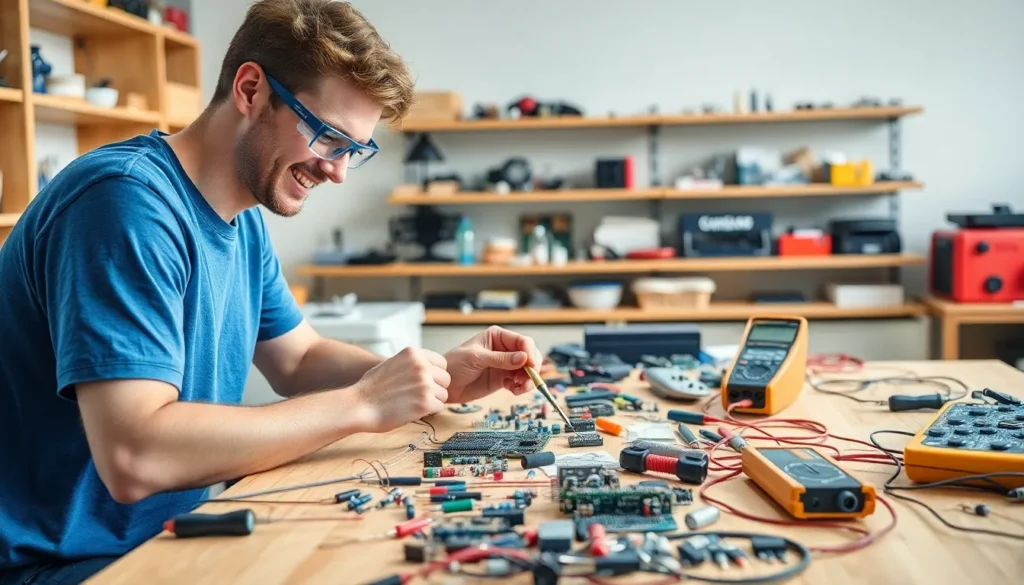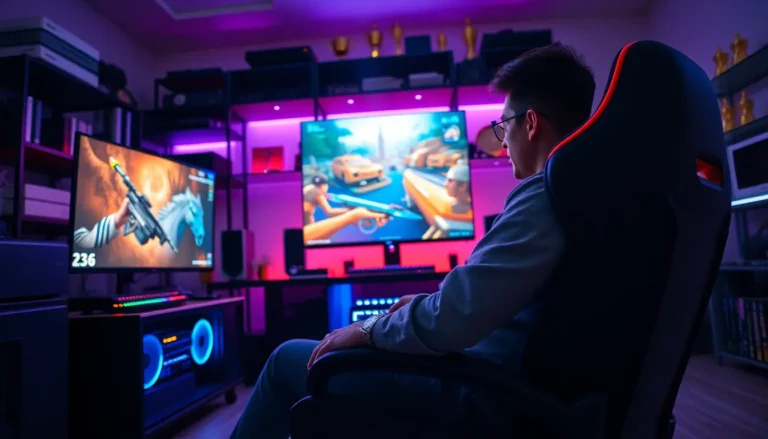In a world where gadgets rule and tech-savvy skills are the new superpowers, DIY electronics projects are the secret sauce to unleashing creativity. Whether it’s turning an old toaster into a quirky sound machine or building a robot that fetches snacks, these projects offer endless possibilities for inventors of all ages.
Table of Contents
ToggleOverview Of DIY Electronics Projects
DIY electronics projects encourage creativity and innovation among individuals of various ages. Engaging in these projects often leads to the development of unique gadgets and devices. People commonly repurpose everyday items, such as toasters or old smartphones, transforming them into functional tools or entertaining creations.
Innovative project examples include building simple robots for tasks like basic movement or light detection. Creating smart home devices that automate tasks can significantly enhance convenience. Other popular projects involve constructing wearable technology that tracks fitness metrics or monitors health parameters.
Projects vary in complexity, catering to beginners and experienced makers alike. Start with basic kits that include all necessary components for assembling simple circuits or devices. Gradually advance to more complex projects that require programming skills or custom circuit designs.
Resources abound for aspiring DIY enthusiasts, including online tutorials, videos, and forums where participants share their experiences. Local maker spaces or community workshops often provide access to tools and guidance for those who prefer hands-on learning.
Communities around DIY electronics thrive on collaboration, inspiring individuals to share ideas and solutions. Participation in these projects fosters not just technical skills but also a sense of accomplishment upon completion. Exploring the vast array of possibilities in DIY electronics projects cultivates a mindset geared towards innovation and problem-solving.
Essential Tools And Materials

Essential tools and materials serve as the foundation for successful DIY electronics projects. Knowing what to gather before starting can make the process smoother and more enjoyable.
Basic Electronic Components
Common electronic components include resistors, capacitors, diodes, and transistors. Resistors control electric current flow. Capacitors store and release electrical energy. Diodes allow current to flow in one direction, while transistors act as electronic switches. Additionally, breadboards simplify circuit assembly. They enable easy modifications without soldering. Jumper wires connect components securely. Familiarity with these components aids in understanding basic circuit functions.
Recommended Tools For Beginners
Beginners benefit from a few essential tools. A soldering iron allows for permanent connections between components. Multimeters measure voltage, current, and resistance, assisting in troubleshooting. Wire strippers and cutters simplify wiring tasks. Additionally, a small screwdriver set tackles various project needs. An assortment of pliers helps with gripping and bending wires. Lastly, a digital caliper enables precise measurements of components. Equipping a workspace with these tools enhances the DIY experience and facilitates project completion.
Popular DIY Electronics Projects
Various DIY electronics projects attract enthusiasts of all skill levels. These projects offer opportunities for creativity and hands-on learning.
Simple Circuit Projects
Simple circuit projects provide an excellent starting point for beginners. Basic tasks include building LED flashers and alarm circuits. These projects introduce essential concepts like voltage, current, and resistance. Understanding how to use breadboards and basic components like batteries and resistors enhances foundational knowledge. One popular example is the light-sensitive resistor project, where a light sensor turns on an LED in low-light conditions.
Arduino-Based Projects
Arduino-based projects expand creative possibilities and technical skills. The Arduino platform supports numerous applications, like creating robots or home automation systems. Building an automated plant watering system exemplifies how Arduino can simplify everyday tasks. With sensors for moisture levels, this project ensures that plants receive adequate water. Additionally, enthusiasts can explore interactive displays or sound-responsive devices using Arduino boards.
Raspberry Pi Innovations
Raspberry Pi innovations focus on integrating computing with DIY projects. This versatile mini-computer allows users to build unique applications like media centers and retro game consoles. One common project involves setting up a home security system with motion detection and notifications. Programming languages such as Python play a crucial role in customizing Raspberry Pi applications. Furthermore, enthusiasts can create web servers to host small websites or learn data visualization techniques.
Tips For Successful DIY Electronics
Success in DIY electronics projects requires attention to detail and the right approach. Adhering to safety guidelines and leveraging available resources can enhance the experience.
Safety Considerations
Prioritizing safety protects against injuries and accidents. Use goggles when soldering to safeguard eyes from solder splashes. Ensure workspaces are organized to minimize hazards, keeping components and tools within reach. Proper ventilation proves important when working with solder fumes, making it critical to work in well-ventilated areas. Always double-check circuit designs before powering up devices to prevent short circuits and equipment damage. Following electrical safety standards reduces risks significantly.
Learning Resources And Communities
Accessing high-quality learning resources accelerates knowledge acquisition. Online platforms such as YouTube offer a myriad of tutorials suitable for varying skill levels. Participating in forums like StackExchange allows makers to ask questions and exchange ideas. Local community workshops provide hands-on experiences and opportunities to collaborate. Embracing online classes can fill gaps in knowledge and enhance skills. Utilizing resources from renowned websites like Instructables further inspires innovative projects while connecting like-minded individuals.
DIY electronics projects offer a unique opportunity for individuals to explore their creativity and technical skills. By engaging with various projects from simple circuits to advanced programmable devices, enthusiasts can experience the thrill of innovation. The supportive DIY community provides invaluable resources and encouragement, making it easier for anyone to dive into this exciting field.
With the right tools and materials, anyone can transform their ideas into reality. Whether it’s building a smart gadget or a fun robot, the possibilities are endless. Embracing DIY electronics not only cultivates problem-solving abilities but also fosters a sense of accomplishment that comes from creating something truly unique.




